Mental
From 1860 mentally ill paupers from Hertfordshire had been accommodated in the Three Counties Asylum in Arlesey, Bedfordshire (which was shared with Bedfordshire and Huntingdonshire). In the early 1890s the Hertfordshire County Council decided that a new asylum was needed for its own patients. A 589.5 acre site, located at Hill End on the outskirts of St Albans, adjoining the Hill End station of the Great Northern railway, was purchased and a committee appointed to oversee the building works and to run the asylum.
The Hertfordshire County Asylum opened in April 1899. It had been built from bricks made at a brickworks which had opened adjacent to the northwest of the site. (The brickworks continued in operation until 1940.)
The first patient to be admitted came from St Albans prison. Gradually mentally ill inmates were transferred from the Hertfordshire workhouses - 317 males and, later, 299 females.
By 1902 the Asylum had seven male and eight female wards. The two sexes were segregated, as was usual at that time, and kept in locked wards. Staff were also segregated and, if a female member of staff married a male member, she would have to resign her post.
As other like institutions, the Asylum was almost self-sufficient. Its farms produced potatoes, wheat and vegetable crops, with the patients providing most of the manual labour. The patient also looked after the livestock - horses, cows and calves, bullocks, heifers, sheep and pigs. Chickens provided eggs and, later, poultry meat, and orchards provided fruit. Milk from the dairy farm was delivered in churns to the Asylum daily by horse and cart. The Asylum had its own station on the railway line between St Albans and Hatfield (now the Alban Way - a cycle- and footpath - the platform is still visible near Brandon Court), and its own spur line and turntable, used to bring in coal and other goods. A water pumping station within the grounds provided water from a deep well. The Asylum had its own bakery, butcher's shop, laundry and various workshops providing services for the institution. A chapel was situated to the north of the main building and there was a cemetery in a small triangle of land between Hill End Lane, the brickworks and the railway line.
In 1908 two new blocks were added; the Asylum could then accommodate 830 patients. In 1917 another block was built.
In 1924 it was renamed the Hertfordshire County Mental Hospital and, in 1927, the Hill End Hospital for Mental and Nervous Diseases.
By 1931 it could accommodate 952 patients. Private patients were accepted, and were charged between £1 5s (£1.25) to £3 3s (£3.15) a week. There was a separate country house for paying female patients. In 1934 more ward blocks were built. By now the locked wards were 'open' and patients were allowed go into the corridors and grounds. Wireless sets (radios) were provided on each of the wards. Working patients were paid 'tallies', which could be exchanged at the canteen for goods - sweets, tobacco, tinned fruit (never fresh) and toilet articles. There was a Club Room for the patients, which was used three times a week - once by the men, once by the women and once by both.
During the 1930s the St Albans Nerve Clinic was established in the grounds of the Hospital to provide psychiatric out-patient care. Clinics were also held at the St Albans City Hospital.
In 1938 the Hospital was again improved and enlarged. The wards were redecorated and new buildings and equipment were provided for the laundry. A cottage at Highfield Hall was converted into three cottages for farm hands and new piggeries were built at Home Farm. Twenty-six pairs of staff cottages were built, as well as a new annexe for 18 male patients. A single-storey admission block for 27 male patients was planned to be built near the annexe. These improvements had cost £11,000. The Hospital could now provide bed accommodation for 1232 patients - 454 male and 778 female (although there were only 1198 patients - 426 male and 772 female). They were cared for by 27 charge nurses (8 male and 19 female) and 68 male and 84 female nurses. Six male and 14 female nurses covered the night shift. The mortality rate for patients in 1938 was 6.3%. Most (71) had died of heart disease, but 5 of TB and 2 from suicide.
During WW2 it became an advanced base hospital for St Bartholomew's Hospital under the Emergency Medical Scheme and the mental patients were transferred to other hospitals. Whilst St Bartholomew's Hospital maintained some medical services for civilians in central London, acting as a receiving and emergency clearing station for the wounded, most of the departments moved to Hill End. Between 1939 and 1947 most of its surgical operations were performed there.
As a mental hospital, Hill End Hospital lacked surgical facilities, possessing only one small operating theatre. The large barber's salon and its adjacent rooms were converted into three operating theatres with anaesthetic and sterilising areas. The mirrors in the salon remained on the walls for the duration of the war.
The first patients, servicemen sent from France, arrived in October 1939, but they were mainly chronically ill, having been accepted into the Army in the first rush of war. During the evacuation of Dunkirk in May and June 1940, the Hospital received 600 wounded soldiers in one week. On one day alone, 321 military casualties arrived in one convoy. The seriously injured were taken to the Recreation Hall for immediate attention, while the less serious cases were kept in the grounds until places could be found for them (fortunately the weather was fine). The operating theatres were in constant use, day and night. When the London 'Blitz' began in 1940, the Hospital dealt mainly with air-raid casualties and sick civilians. The Hospital's railway was used to convey patients from the station.
In 1948 it joined the NHS as the Hill End Hospital and Clinic for the Prevention and Treatment of Mental and Nervous Disorders. Mental patients began to be readmitted to the Hospital, but St Bartholomew's Hospital continued to control about a quarter of the beds for acute cases. (St Bartholomew's Hospital gradually returned to London, but six units still remained in 1950. The final department - the Neurosurgical Unit - returned when the new Queen Elizabeth II block opened on the West Smithfield site in 1962).During the 1950s use of drugs in the treatment of mental illness became more prevalent. Patients' lives improved as entertainments were increasingly provided for them - cinema shows, whist drives and dances. Television was installed in some of the wards.
In 1958 the hospital farm closed down, in line with government policy. However, the gardens remained, and horticulture was added to the therapeutic activities available for the patients. Patients could also work in the 'factories', set up by the Hospital for outside firms. New signage in bright colours replaced the old Asylum notices and the wards were renamed after famous people.
In 1961 a Day Hospital opened for young adults with acute mental disease (during the 1960s the Hospital became known for its pioneer work in community care). In 1963 the cemetery was renamed the 'Garden of Rest' and ashes from cremations were permitted to be scattered there. In 1969 a new Adolescent Unit opened.
The wards were improved during the 1970s, with better furniture and flooring. A purpose-built chiropody unit opened. One of the wards was converted into a Day Hospital for the elderly mentally frail (later beds were added so that patients could be admitted for assessment). A Clothing Department was established to provide individual personal clothing for medium- and long-stay patients. Better recreational facilities were provided, as well as Art Therapy and Industrial Therapy.
In 1974, when the Hospital had 487 beds, its boilers reached the end of their life and were closed down. The boiler at the neighbouring Cell Barnes Hospital was enlarged to enable it to provide steam via an over-and underground pipe line to Hill End.
The number of in-patients gradually decreased during the 1970s, as large-scale psychiatric hospitals were steadily discredited. By 1980 there were 426 patients. The Mental Health Act, 1983, included improvements for the rights of detained patients, enabling them to appeal against being committed. In line with government policy, programmes were developed to prepare patients to live outside in the community. By the mid 1980s the number of in-patients had considerably reduced, and it was evident that the Hospital would soon close.
Demolition of unused Hospital buildings began at the beginning of the 1990s, when the Hospital had 355 beds. In 1994 the building of new houses began on the site.
The Hospital finally closed in November 1995.
The Highfield Park Trust, an independent charity established in 1996, took over the sites of Hill End Hospital and the neighbouring Cell Barnes Hospital. Planning permission was granted by the St Albans City and District Council for 700 new dwellings to be built on these sites on condition that 60 acres of land be set aside for a public park.
Only three of the ward blocks of Hill End Hospital remain, which have been converted into social housing. The former Hospital chapel has been refurbished with the aid of £2m from the Arts Lottery and is now an arts centre for Trestle, a theatre company.The Garden of Rest (the Hospital cemetery) is located at the northeast of the site.
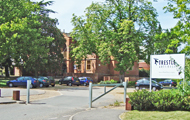
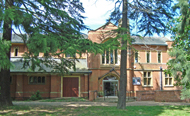

The former chapel is now the Trestle Arts Base.
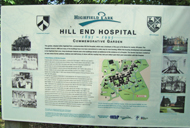
A placard giving a brief history of the Hospital.

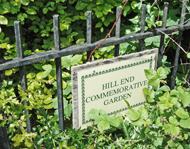
The Commemorative Garden at the south of the Hospital site.
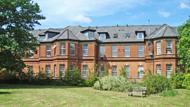
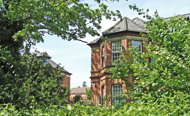
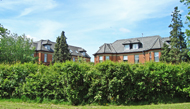
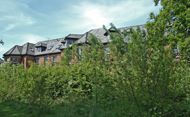
The three remaining ward blocks, as seen from the Commemorative Garden and the Woodland Garden, have been converted into apartments.
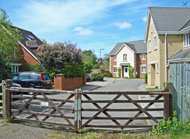
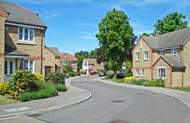
Most of the site has been developed for new housing (above). The remainder has become Highfield Park (below).
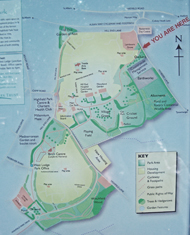
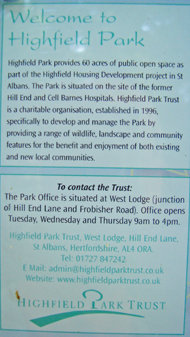
Site map and signage for Highfield Park.
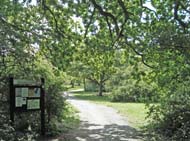
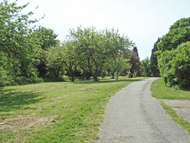
The eastern entrance to Highfield Park (left) and inside the Park (right).

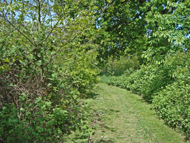
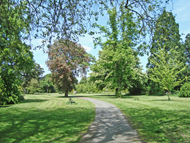

The Woodland Garden, to the east of the Commemorative Garden, contains many mature trees from the Hospital era.

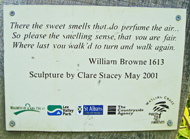
A small wooden sculpture in the park with a poem pinned to the centre part.
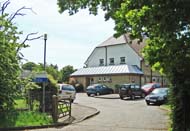
Lambourn Grove, a day hospital and assessment unit owned by the Hertfordshire Partnership NHS Foundation Trust, is located to the northeast of the site.
In 1939 two vacated wards - FG1 and FG2 - became the Hill End Plastic Unit under the direction of Rainsford Mowlem (1902-1986). It was one of four plastic surgery units for London, the others being at Stoke Mandeville Hospital, Park Prewitt Hospital in Basingtoke and Queen Mary's Hospital in Roehampton. (Later, in 1944, the Canadian Wing at Queen Victoria Hospital in East Grinstead was built). Junior doctors from St Bartholomew's Hospital staffed the unit, later becoming consultant plastic surgeons in the new NHS.
Each of the two 33-bedded wards in the Unit were staffed by one Sister and 18 nurses. During busy times the beds would be moved together so that altogether 80 patients could be accommodated. The ground floors contained beds for male and female patients, an operating theatre, a Medical Photography Department, a dental surgery with a laboratory, and offices. The upstairs floors accommodated men and children.
In 1944 the Unit was asked by Prof Alexander Fleming (1881-1955) to investigate the uses of penicillin. A milk bottle containing a small amount of fine brown sediment at the bottom was delivered regularly. The doses were empirical - a small amount was dissolved in saline and injected into the patient. It was also used as a topical application and for sore throats. The residue of the bottle was washed out and given to the patients to drink. Other innovations developed by the Unit were the use of cancellous chip bone grafts from the iliac crest in the treatment of nonunion of fractures of the jaw or the tibia and fibula. Dental surgeons developed the use of intraosseous pins (Fickling pins, MacGregor pins) to immobilize jaw fractures.
By 1952 the Medical Superintendent was anxious to restore Hill End Hospital to a mental hospital and the Plastic Unit was told it had to move. It was given a choice of the Archway Hospital near Highgate or the Mount Vernon Hospital in Northwood. The latter was chosen as the Unit received a large number of road traffic accidents and Northwood was better sited for the M1 and the A1, as well as the hospitals that referred cases.
Mowlem R 1944 Cancellous chip bone-grafts: Report on 75 cases. Lancet II, 746-748.
Mowlem Rainsford, Buxton JLD, MacGregor AB, Barron JN 1941 External pin fixation for fractures of the mandible. Lancet II (4 October) , 391.
Chaplin R, Peters S 2003 Executives have taken over the asylum: the fate of 71 psychiatric hospitals. Psychiatric Bulletin 27, 227-229.
http://news.bbc.co.uk
http://pb.rcpsych.org
www.aim25.ac.uk
www.bartsandthelondon.nhs.uk
www.bbc.co.uk
www.british-history.ac.uk
www.countyasylums.com
www.haroldbeck.org.uk
www.hertsmemories.org.uk
www.hertfordshire-genealogy.co.uk
www.highfieldparktrust.co.uk
www.stalbansoutofsightoutofmind.org.uk
www.stalbansreview.co.uk
Return to home page